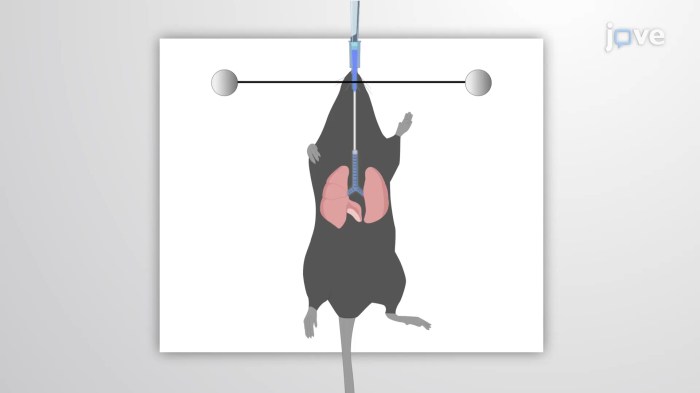The addition of surfactant to the lung interior, a transformative therapeutic approach, has revolutionized the management of respiratory disorders. Surfactant, a complex mixture of lipids and proteins, plays a pivotal role in reducing surface tension at the air-liquid interface within the lungs, facilitating effortless breathing and efficient gas exchange.
This article delves into the physiological effects, clinical applications, recent advances, and future directions of surfactant therapy, highlighting its profound impact on pulmonary medicine.
Surfactant’s remarkable ability to reduce surface tension stems from its unique molecular structure, enabling it to form a thin film that stabilizes the delicate alveoli, preventing their collapse during exhalation. By enhancing lung compliance, surfactant ensures that the lungs can expand and contract effortlessly, optimizing ventilation and gas exchange.
Moreover, surfactant plays a crucial role in innate immune defense, protecting the lungs from infection and inflammation.
Physiological Effects of Surfactant Addition to the Lung Interior

Surfactant, a complex mixture of lipids and proteins, plays a crucial role in maintaining lung function. Its primary physiological effects include:
Reduction of Surface Tension:Surfactant molecules align at the air-liquid interface within the lungs, forming a thin film that significantly reduces surface tension. This reduction allows the lungs to expand and contract more easily, reducing the work of breathing.
Enhanced Lung Compliance:By reducing surface tension, surfactant improves lung compliance, making it easier for the lungs to fill with air. This is particularly important during inspiration, when the lungs must expand against the elastic recoil forces of the chest wall and diaphragm.
Improved Gas Exchange:The reduction in surface tension also facilitates gas exchange by promoting the formation of smaller, more stable alveoli. This increases the surface area available for gas exchange, enhancing oxygen uptake and carbon dioxide removal.
Examples of Beneficial Surfactant Addition:Surfactant addition is particularly beneficial in conditions where surfactant production or function is impaired, such as:
- Neonatal respiratory distress syndrome (NRDS)
- Acute respiratory distress syndrome (ARDS)
- Cystic fibrosis
Clinical Applications of Surfactant Therapy: The Addition Of Surfactant To The Lung Interior

Surfactant therapy is the administration of exogenous surfactant to improve lung function in various respiratory conditions. Different types of surfactant formulations are used in clinical practice:
- Natural surfactants:Extracted from animal or human lungs
- Synthetic surfactants:Chemically synthesized
- Recombinant surfactants:Produced using genetic engineering
Indications for Surfactant Therapy:Surfactant therapy is indicated in patients with:
- Severe NRDS
- ARDS with impaired surfactant production
- Aspiration pneumonia
Contraindications for Surfactant Therapy:Absolute contraindications include:
- Active bleeding in the lungs
- Severe pulmonary hypertension
Administration and Dosage:Surfactant is typically administered intratracheally through a thin catheter. The dosage and frequency of administration vary depending on the patient’s condition and the type of surfactant used.
Recent Advances in Surfactant Research

Ongoing research is focused on developing novel surfactant formulations and delivery systems to improve the efficacy and safety of surfactant therapy:
- Nanoparticle-based surfactants:Encapsulate surfactant in nanoparticles to enhance lung deposition and prolonged action
- Dry powder surfactants:Formulated as a powder that can be inhaled, reducing the risk of infection associated with intratracheal administration
Emerging Applications:Surfactant is also being investigated for applications beyond pulmonary conditions:
- Treatment of asthma and chronic obstructive pulmonary disease (COPD):By reducing inflammation and improving lung function
- Regenerative medicine:Promoting tissue repair and regeneration in damaged lungs
Challenges and Future Directions in Surfactant Therapy
Despite significant advancements, surfactant therapy faces several challenges and future directions:
- Optimizing surfactant formulations:Developing surfactants with improved stability, efficacy, and safety
- Personalized surfactant therapies:Tailoring surfactant therapy based on individual patient characteristics to enhance outcomes
- Addressing long-term effects:Evaluating the potential long-term effects of surfactant therapy, including immune responses and lung development
FAQ Overview
What are the clinical indications for surfactant therapy?
Surfactant therapy is primarily indicated in neonates with respiratory distress syndrome (RDS), a condition characterized by surfactant deficiency leading to respiratory failure. It is also used in adults with acute respiratory distress syndrome (ARDS) and other conditions associated with surfactant dysfunction.
How is surfactant administered?
Surfactant is typically administered via intratracheal instillation, a procedure performed by a healthcare professional. The surfactant is delivered directly into the lungs through a thin tube inserted into the trachea.
Are there any risks associated with surfactant therapy?
Surfactant therapy is generally safe and well-tolerated. However, potential risks include transient bradycardia, pulmonary hemorrhage, and allergic reactions. These risks are rare and can be managed with appropriate monitoring and supportive care.